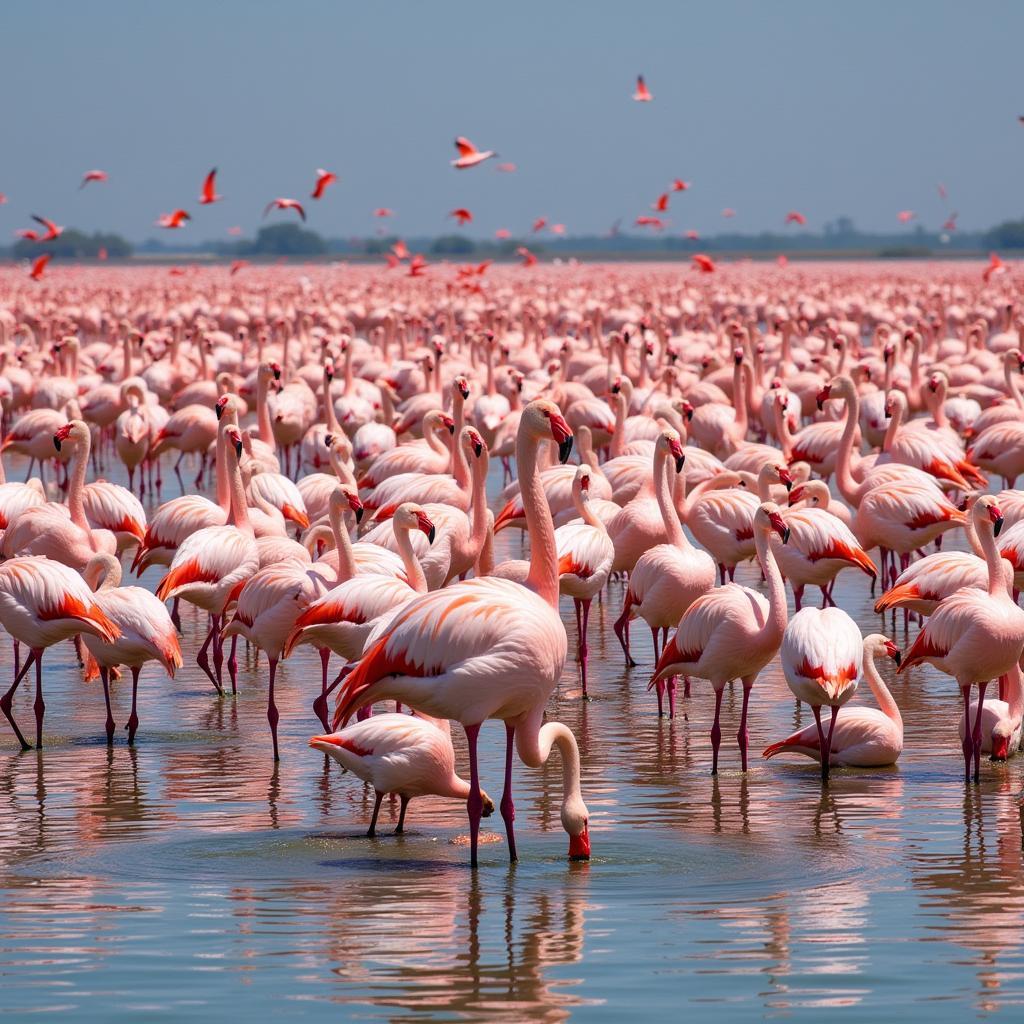African Birds Images With Names: A Visual Journey
Africa, a continent teeming with life, boasts a breathtaking array of avian wonders. From the soaring raptors of the savanna to the vibrantly colored birds of the rainforest, African birds captivate with their beauty and diversity. This visual journey will take you through some of the most stunning African Birds Images With Names, offering a glimpse into their fascinating world.
Unveiling the Avian Jewels of Africa
Africa is home to over 2,300 bird species, representing approximately 10% of the world’s total bird population. This incredible diversity is due in part to the continent’s varied habitats, ranging from lush rainforests and vast savannas to arid deserts and towering mountains. Each ecosystem harbors a unique assemblage of bird species, each adapted to thrive in its particular environment.
Iconic Birds of the African Savanna
The African savanna, with its wide-open grasslands and scattered acacia trees, is home to some of the continent’s most iconic bird species.
-
African Fish Eagle: This majestic raptor, with its distinctive white head and brown body, is a powerful hunter, often seen swooping down to snatch fish from the water’s surface.
-
Ostrich: The world’s largest bird, the ostrich is a flightless marvel, capable of running at speeds up to 70 km/h. Their powerful legs and long necks make them well-suited to life on the open savanna.
-
Lilac-breasted Roller: A riot of color, the lilac-breasted roller is a small but striking bird, known for its acrobatic aerial displays and vibrant plumage.
The Symphony of the African Rainforest
Venturing into the heart of Africa’s rainforests reveals a hidden world of avian treasures, their calls echoing through the dense foliage.
-
African Grey Parrot: Renowned for their intelligence and ability to mimic human speech, African Grey Parrots are highly sought-after pets. Sadly, this has led to their decline in the wild due to habitat loss and the illegal pet trade.
-
African Paradise Flycatcher: With their long, flowing tail feathers, African Paradise Flycatchers are a sight to behold. The males, in particular, are known for their striking black and white plumage.
-
Yellow-casqued Hornbill: These large birds are easily recognizable by their prominent casques, bony structures on top of their beaks. They play an important role in seed dispersal in the rainforest.
African Birds: More Than Just Images
 Group of Flamingos Gathered at Waterhole
Group of Flamingos Gathered at Waterhole
Appreciating African birds goes beyond simply admiring their beauty. These birds play vital roles in their ecosystems, acting as pollinators, seed dispersers, and pest controllers. They are also important indicators of environmental health, with their populations reflecting the overall well-being of their habitats.
Conservation: Protecting Africa’s Feathered Wonders
Sadly, many African bird species face threats from habitat loss, climate change, and the illegal wildlife trade. Conservation efforts are crucial to ensure the survival of these magnificent creatures for generations to come. Supporting organizations working to protect African birds and their habitats is essential.
Conclusion
The captivating beauty of African birds, showcased through stunning images and their evocative names, provides a glimpse into the continent’s rich biodiversity. Let us cherish these avian wonders and work together to ensure their continued existence.
FAQ
What is the most common bird in Africa?
The most common bird in Africa is the Red-billed Quelea, often seen in massive flocks numbering in the millions.
What is the national bird of Africa?
Africa, being a continent, doesn’t have a single national bird. However, many African countries have adopted specific birds as their national symbols.
Where can I find more information about African birds?
You can find a wealth of information about African birds on websites like african birds wikipedia and african birds pictures and names.



